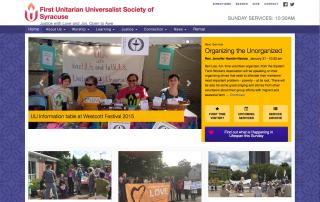Website Policies
In most cases, a communications vehicle that represents a congregation should be owned and operated by the congregation as a whole, and be used to further the mission and values of the congregation. Along those lines, here are some specific areas that might be helpful for congregations to consider regarding their websites:
- Financial ownership. The best way to ensure that the congregation is the owner of the website is to have the congregation as an entity directly paying for the hosting plan, domain registration, and any other one-time or ongoing costs associated with the website. This is far preferable to having the costs come out of an individual’s personal funds.
- Administrative access. It’s a good idea to make sure that at least one staff person has full administrative access to the congregational website, and at least three people in the congregation (including the staff person) have full administrative access. Full administrative access includes having the username and password that gives the greatest possible control over the hosting plan, the domain registration, the content management system, and any other utilities that are critical to the existence and maintenance of the website.
- Content management access. At least one staff person, and at least three people total, should not only have access to the site, but also be willing and able update the content on the website in a timely manner. To facilitate this process, it may be necessary to provide some training and documentation to help people learn to update the website.
- Accountability and support for people updating the congregation’s website. A communications committee, the governing board, or other bodies within the congregation can regularly evaluate whether the website is furthering the mission of the congregation, and whether or not the people updating the website are adequately supported.
- Respect for copyright. Congregations should consider using copyright notices, Creative Commons licenses, or other notices that explain how content found on the website may be used. And congregations should respect copyright by only posting text, photos, videos, etc. that they have permission to reproduce.
- Internal and external clarity about which communications vehicles represent the congregation as a whole (in which case they should be held to the above standards) and which communications vehicles are the property of an individual. Internal and external clarity about how the congregation’s name may be used. A good rule of thumb is that if the congregation’s name is used in the title of a website, then the congregation as an entity should have control over that website, and the congregation should be represented positively and accurately by that website.
- Sample: Privacy Policy of the Unitarian Church of Los Alamos, NM
